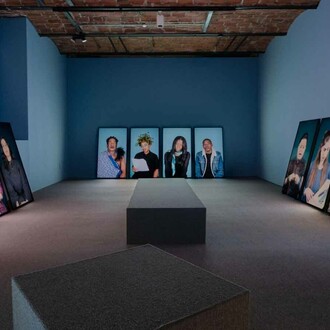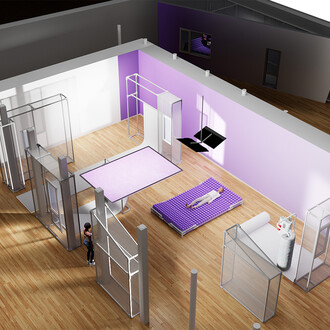Russian-American Jewish artist Max Weber (1881–1961) is widely acknowledged within the United States for introducing Cubism to New York. With Max Weber: An American Cubist in Paris and London, 1905–15, Ben Uri is proud to unveil the first major UK museum show of Weber’s work and the first to examine his career and influence within a European context.
This exhibition highlights Weber’s crucial role in the cross-cultural dialogue between Paris and London and his important influence on the British avant-garde during the first two seminal decades in the history of 20th Century European modernism.
We are delighted to be working with the University of Reading, whose generous loan of 14 rare and exciting Weber paintings, c. 1910–1912 , initiated this exhibition, is at its core and has never previously been exhibited in its entirety. There is still very little American painting in UK public collections and no pictures at all by Weber outside the University’s collection.
A small selection of works documenting Weber’s crucial early years in Paris (1905-09) opens the exhibition. In Paris, Weber was introduced to the work of Cézanne and met Picasso, Henri Rousseau and Matisse, becoming a founding member of the latter’s art class, where he executed works including Apollo in Matisse’s Studio, 1908 and the graphite Portrait of Matisse, 1908, before returning to New York in 1909.
Weber met the photographer Alvin Langdon Coburn (1882 ̶ 1966) in 1910. The two men shared a fascination for the New York skyline reflected in Coburn’s photographs and Weber’s dynamic cityscapes, including New York. They struck up a lifelong friendship, conducted through letters after Coburn settled in England in late 1912 and Coburn put together the collection of Weber’s work later bequeathed to the University of Reading. It also includes Coburn’s album of 79 photographs of Weber’s work (University of Reading Special Collections), together with an important portrait of Coburn by Weber (University of Reading Art Collection), and Coburn’s reciprocal photograph of Weber (from a British private collection that also once belonged to Coburn).
Weber’s exhibition with and influence upon the British avant-garde is also explored through his inclusion in Roger Fry’s first Grafton Group Exhibition at the Alpine Club Gallery, London in March 1913; six of the eleven Weber pictures shown (all but one from the Reading Collection) are included in the current show. Also brought together for this exhibition are works by a number of the Grafton Group artists: Vanessa Bell, Frederick Etchells, Duncan Grant, Percy Wyndham Lewis and Fry himself , as well as other non-member exhibitors including Winifred Gill, C R W Nevinson and Helen Saunders, who all exhibited anonymously; along with a work on paper by the only other named artist, fellow ‘foreigner’, Wassily Kandinsky.
The exhibition has been co-curated by Professor Anna Gruetzner Robins (University of Reading) and Sarah MacDougall (Eva Frankfurther Research and Curatorial Fellow for the Study of Émigré Artists, Ben Uri). It is accompanied by a fully-illustrated, 200-page hardback catalogue distributed by Lund Humphries with contributions from American Weber expert, Dr Percy North; Professor Anna Gruetzner Robins ; Dr Nancy Ireson (Art Institute of Chicago); Pamela Roberts (Coburn expert and freelance curator); Lionel Kelly (former Director of American Studies Department, University of Reading); and Sarah MacDougall.
Ben Uri Museum
108A Boundary Road
London NW8 0RH United Kingdnom
Ph. +44 (0)20 76043991
info@benuri.org.uk
www.benuri.org.uk
Opening hours
Monday from 1.00pm to 5.30pm
Tuesday - Friday from 10.00am to 5.30pm
Sunday from 12.00pm to 4.00pm
Related images
- Roger Fry, The White Jug, 1915, oil, bodycolour and collage on cardboard, The Courtauld Gallery, London
- Max Weber, Portrait of Matisse, 1908, graphite on paper, Gerald Peters Gallery, New York
- Max Weber, The Dancers, 1912, pastel and chalk on paper, University of Reading











